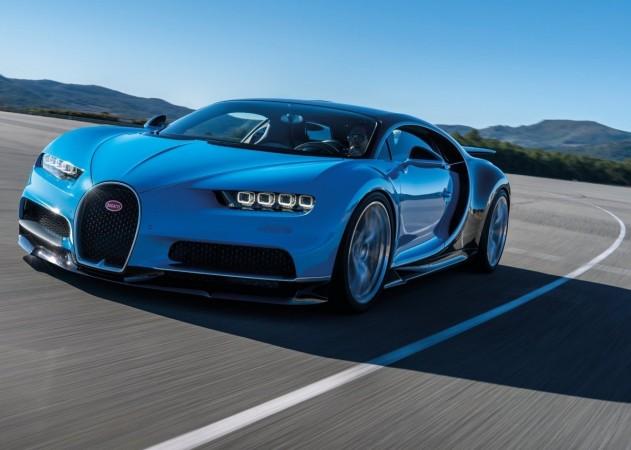
French high-performance car-maker Bugatti unveiled the Chiron hypercar at the 86th Geneva Motor Show in March. The Chiron is the spiritual successor of the Veyron and is one of the fastest cars in the world. The 2.4 million euro (approximately Rs 17.5 crore) hypercar reportedly received confirmed booking for 220 units within nine months of launch.
The number of bookings has been confirmed by Bugatti's CEO Wolfgang Durheimer in an interaction with GTspirit.com. However, the company has so far delivered only one Chiron to a customer who also bought unique one-off Bugatti Gran Turismo Concept.
Bugatti plans to start potential customer test drives from March 2017. This is expected to draw more customers. "I'm confident the customers who have not yet decided to order a Chiron will do so when they have had a chance to drive it." GTspirit quoted Durheimer as saying. Bugatti planned to produce only 500 units of the Chiron over the course of eight years. Going by the response, Bugatti may have to review and accelerate the production.
The heart of the Chiron is the W16 8.0-litre engine with four turbochargers that develops 1479bhp at 6700rpm and 1600Nm of torque in the range of 2000 to 6000rpm mated to specially developed seven-speed dual-clutch gearbox that sends this torque to all four wheels. The massive power figures let the Chiron sprint 0 to 100kmph time in mere 2.5 seconds. Zero to 200kmph speed can be achieved in 6.5 seconds and to reach 300kmph, Chiron needs just 13.6 seconds. The hypercar will accelerate till the top speed of 420kmph.
On the design front, Chiron is not an all-new car. It is heavily inspired from the Veyron in its basic silhouette. Chiron's evolved design features less rounded and more muscular body panels than the Veyron. The new Bugatti is 82mm longer, 40mm wider and 53mm higher than the Veyron and is also 155 kg heavier. The car features specially-developed Michelin tyres 285/30 R20 spec up front and 355/25 R21 tyres at the rear. Braking is handled by 420mm front and 400mm rear disc brakes with eight piston and six piston callipers, respectively.




![India Auto Roundup: Maruti Suzuki, Mahindra have exciting launches in November [details here] India Auto Roundup: Maruti Suzuki, Mahindra have exciting launches in November [details here]](https://data1.ibtimes.co.in/en/full/805520/india-auto-roundup-maruti-suzuki-mahindra-have-exciting-launches-november-details-here.jpg?w=220&h=135&l=50&t=40)
!['Kaise ho bhai..': PM Modi shook hands with Akshay Kumar at a media summit in Delhi [Watch]](https://data1.ibtimes.co.in/en/full/806317/kaise-ho-bhai-pm-modi-shook-hands-akshay-kumar-media-summit-delhi-watch.jpg?w=220&h=138)


![India Auto Roundup: Maruti Suzuki, Mahindra have exciting launches in November [details here]](https://data1.ibtimes.co.in/en/full/805520/india-auto-roundup-maruti-suzuki-mahindra-have-exciting-launches-november-details-here.jpg?w=220&h=135)
